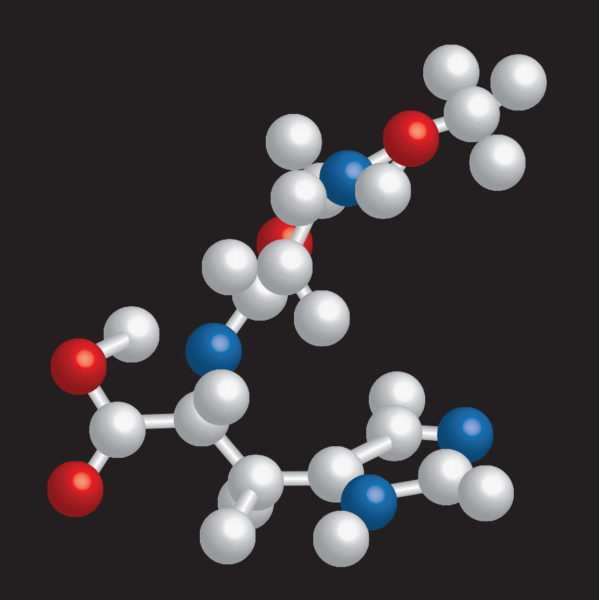There are different forms of carnosine. The best known is called L-carnosine. As you may imagine, N-acetylcarnosine and L-carnosine are related, but they are different.


It is only N-acetylcarnosine that has been clinically proven as suitable for eye use. Other forms of carnosine, such as L-carnosine should not be used topically in the eye.
In the case of L-carnosine, it has been clinically shown that topical administration of pure L-carnosine to the eye does not lead to accumulation of this compound in the aqueous humor within a reasonable amount of time, or in a concentration exceeding that of the placebo-treated eye. Indeed L-carnosine entering the organism is not accumulated by the tissues, but is excreted or destroyed by carnosinase, a dipeptidase enzyme that is present in blood plasma. Furthermore, there are indications that a topical eye application of L-carnosine would release the toxic compound, histamine, (which can severely promote oxidation reactions), before it reaches the aqueous humor, and therefore could cause other eye-problems in long-term use.
This means that L-carnosine is not suitable for eye-drop use as it is either ineffective, or could even be damaging to some tissues in long-term use.
However, due to its relative hydrophobicity, N-acetylcarnosine does penetrates through the cornea gradually, thus being able to maintain a longer active therapeutic concentration of carnosine directly into the aqueous humor and the lens of the treated eye. Importantly, N-acetylcarnosine is highly resistant to hydrolysis by carnosinases.
This means that different techniques of ocular administration with N-acetylcarnosine have proven efficacy for the treatment of cataracts, combined with excellent tolerability to the eye, safety, and the lack of side effects.
How and when do I use the Can-C eye-drops?
As is usual with most treatments, the earlier one starts the better the results that can be expected.
In the clinical trials, persons who had senile cataracts for less than 7-years had the fastest and greatest results. Persons with cataract from 7-15 years still had good results, but persons who had maintained cataracts for more than 15-years had the least beneficial results, although even then they still managed to obtain improvements.
Opticians can know that the technical measurement, is that vision should ideally not be worse than 0.3 (which is equivilant to 20/70).
Can-C eye-drops have been shown to have measurable affects within only 1-month of use! However, it is recommended that for maximum efficacy, that administration be continued for a period not less than 3-5 months. As most of the clinical trials have been measured at 3 and 6 month periods, a period of 6-months should be considered.
Dosages
Treatment dosages are at 1 or 2 drops, twice a day.
There is no benefit to use more than 4-drops per eye per day- so do not exceed this dose.
Also consider that senile cataract is an on-going aging disorder. It is because of low anti-oxidant and higher free radical activity (due to age), that Can-C may be required on a regular basis to help maintain the eye’s natural anti-oxidant defenses, and therefore help to prevent a reappearance of senile cataract and other eye degenerative disorders. As a preventative measure, 1-drop into the eye once a day with occasional breaks may be a suitable on-going regime.
Application
Lean your head back and look up. Instill “one drop” then slowly and gently close the eye. Do not blink or reopen for 60 seconds. Repeat this procedure, if a second drop is used. This allows each drop to be absorbed into the eye tissue. Blinking, even one or two times, will pump most of the solution out of the eye. If you have neck problems, lie down or use a tilt-back chair.
To open the container, twist firmly down on the cap until the punch on the inside of cap punctures the top of the container. Once punctured, the lid will go down far enough to create a seal on the dispensing nozzle.
To remove the cap use a twisting action while pulling the cap away from the container.
To dispense a drop, remove the cap and squeeze the container gently until a drop is dispensed.
To reseal the container, replace the cap over the dispensing nozzle and twist firmly down until the cap makes a seal with the base of the nozzle.